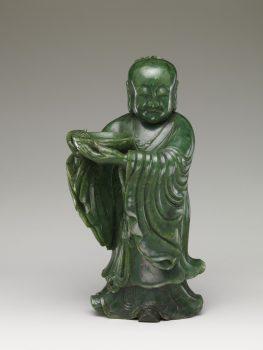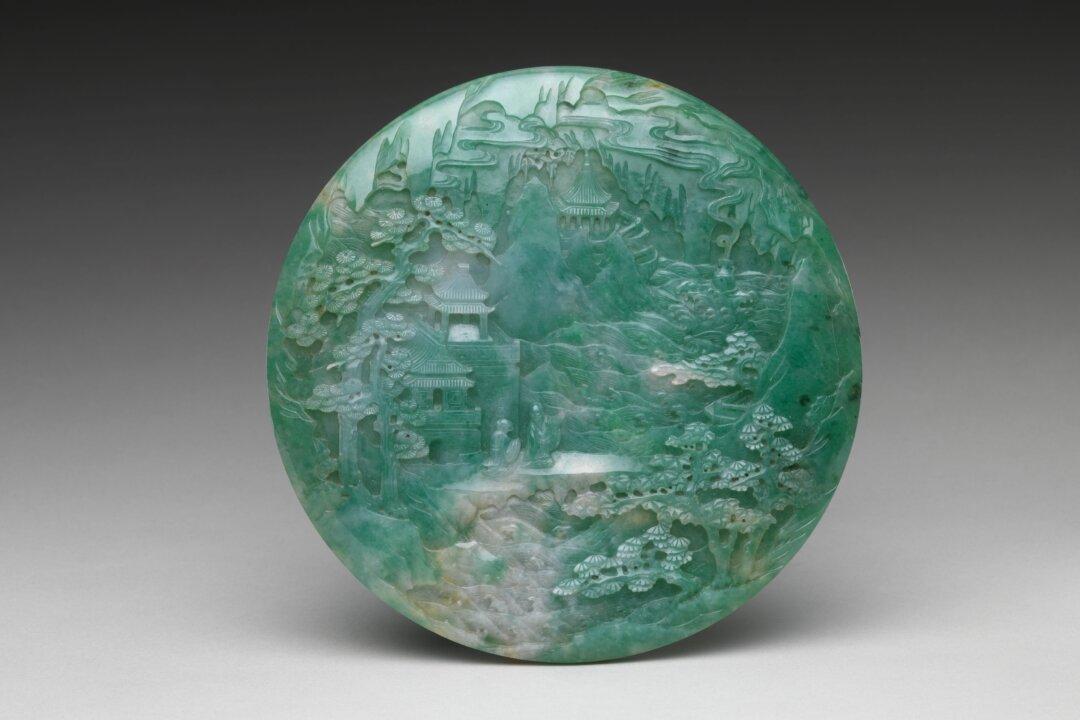In China, the most beloved and revered hard stone of all is jade, a symbol of purity and gentlemanly virtue. As the Chinese scholar-official Xu Shen wrote nearly two millennia ago, “Jade is the fairest of stones. It is endowed with five virtues: Kindness is exemplified by its luster, bright yet warm; rectitude by its translucency, revealing the color and markings within; wisdom by the clarity and penetrating quality of its note when struck; courage, in that it may be broken but cannot be bent; purity, in that it has sharp edges, but they injure none.”

Temple attendant, 18th century (Qing Dynasty). Jade (nephrite), 12 inches high, 6 ½ inches wide, gift of Florence and Herbert Irving, 2015. The Metropolitan Museum of Art






